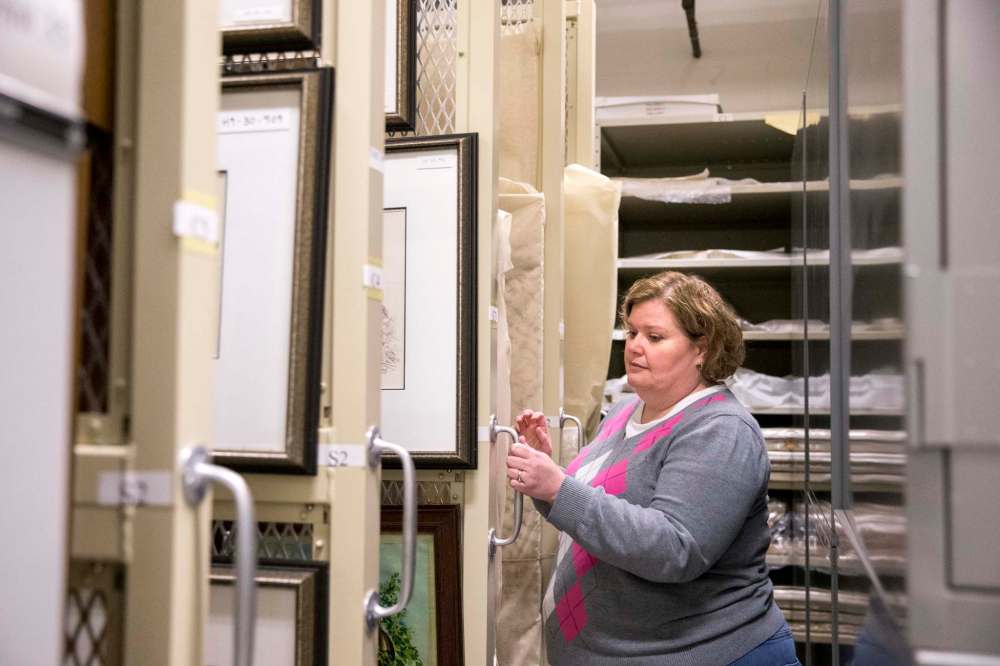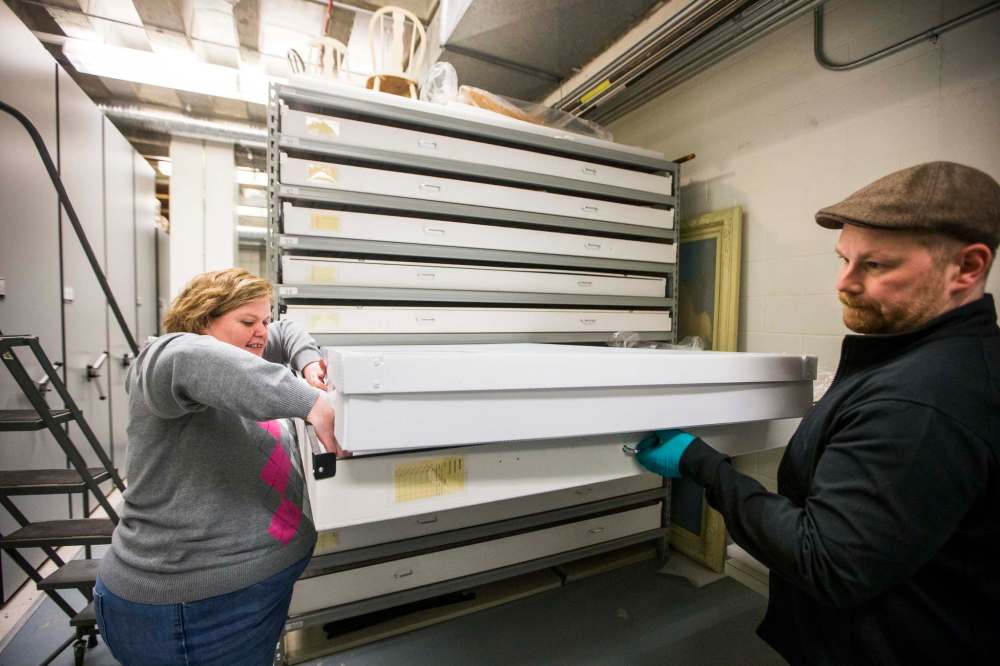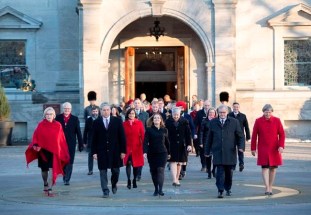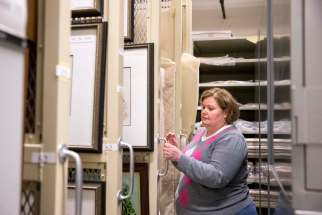Overcrowding the archives Lack of storage major threat to collections: Canadian museum poll
Read this article for free:
or
Already have an account? Log in here »
To continue reading, please subscribe:
Monthly Digital Subscription
$0 for the first 4 weeks*
- Enjoy unlimited reading on winnipegfreepress.com
- Read the E-Edition, our digital replica newspaper
- Access News Break, our award-winning app
- Play interactive puzzles
*No charge for 4 weeks then price increases to the regular rate of $19.00 plus GST every four weeks. Offer available to new and qualified returning subscribers only. Cancel any time.
Monthly Digital Subscription
$4.75/week*
- Enjoy unlimited reading on winnipegfreepress.com
- Read the E-Edition, our digital replica newspaper
- Access News Break, our award-winning app
- Play interactive puzzles
*Billed as $19 plus GST every four weeks. Cancel any time.
To continue reading, please subscribe:
Add Free Press access to your Brandon Sun subscription for only an additional
$1 for the first 4 weeks*
*Your next subscription payment will increase by $1.00 and you will be charged $16.99 plus GST for four weeks. After four weeks, your payment will increase to $23.99 plus GST every four weeks.
Read unlimited articles for free today:
or
Already have an account? Log in here »
Hey there, time traveller!
This article was published 20/11/2019 (2213 days ago), so information in it may no longer be current.
As collections grow inside aging museums with limited storage, local curators have resorted to keeping precious artifacts on the floor of a flood plain.
The Manitoba Museum houses approximately 2.8 million artifacts and specimens, including massive installations and archeological objects as tiny as a shard. With somewhere in the neighbourhood of 20,000 square feet of storage, objects have to be stored in less-than-ideal locations, such as the basement.
“The average person who goes to whatever kind of a museum, you will see what’s on display in exhibitions,” said Monique Brandt, executive director of the Association of Manitoba Museums. “For most museums, that’s just the tip of the iceberg.”

Newly-released results of a survey conducted by the Canadian Association for Conservation of Cultural Property and the Canadian Association of Professional Conservators show collections are outpacing infrastructure at museums across the country.
A total of 389 institutions (12 Manitoba-based) took part in the online survey between May 23 and July 31, 2018. The respondents include museums, archives, art galleries, libraries, and community centres.
More than half of respondents reported overcrowded storage units and aisles. About half reported objects were at risk of physical damage due to improper storage. Inadequate fire systems and security were among other common concerns.
While more rare, others reported leaky roofs, theft, and mould putting their collections in jeopardy.
All the while, half of respondents reported their collection size had doubled or more than doubled over the last 20 years.
Manager of collections and conservation at the Manitoba Museum, Cindy Colford, said staff who work at 190 Rupert Ave. weren’t surprised by the results.

“For many years, museums across the country have been continuing to collect, and budgets to care for collections and do other museums functions just have not kept pace,” said Colford, a trained conservator.
As well, operating inside historic buildings can be costly. The downtown Winnipeg museum just bought a new heating, ventilation and air conditioning system for its dedicated storage vaults — a move Colford called “a huge win for collections care.”
Across town at the Transcona Museum, curator Alanna Horejda said a two-person team is doing the best it can to moderate temperatures to protect more than 50,000 artifacts. It’s a daily challenge in a nearly 100-year-old building without insulation.
“Ethically, we have to ensure we can care for them as best we can. We must consider that when donations are offered,’” Horejda said, adding the duo tries to maintain organized storage areas, but limited space means they have to store items on the floor, “which is not ideal.”
There are approximately 200 not-for-profit institutes that have collections, ranging from photographs to scientific specimens, in the province. The archives often rely on a mix of government funding, grants and donations.
Horejda said the Transcona Museum’s operational funding from the City of Winnipeg has been frozen for more than five years, and it’s becoming increasingly tougher to win grants due to high demand.

And when donations are made, funds aren’t usually designated for collection spaces — what Rhonda Hinther refers to as the less glamorous side of a museum.
Among people in power and the public, there’s a real “lack of awareness” about the extensive work required to preserve objects, said Hinther, an associate professor of history at Brandon University. The process involves everything from dusting to climate control.
Sport, Culture and Heritage Minister Cathy Cox was unavailable for an interview Wednesday.
In an emailed statement, Cox noted the importance of preserving local history. She cited the province’s commitment to the file by providing more than $1.5 million in grant support to the heritage sector and the creation of the Manitoba Heritage Trust Program.
The three-year, $5-million program encourages museums to establish endowments, with the province matching 50 per cent of a qualifying museum’s contributions, up to $25,000.
Still, museums continue to grapple with stable funding and storage. In order to address current challenges, Colford said the Manitoba Museum may have to limit the artifacts it accepts in the future.

“Museums have a responsibility to collect objects that tell Manitoba’s stories, and we will continue to collect, but we are very thoughtful on the things that we collect,” she said. “They have to fit our collecting mandate, they have to represent Manitoba, they have to have a Manitoba collection.”
maggie.macintosh@freepress.mb.ca
Twitter: @macintoshmaggie

Maggie Macintosh reports on education for the Winnipeg Free Press. Funding for the Free Press education reporter comes from the Government of Canada through the Local Journalism Initiative.
Our newsroom depends on a growing audience of readers to power our journalism. If you are not a paid reader, please consider becoming a subscriber.
Our newsroom depends on its audience of readers to power our journalism. Thank you for your support.










